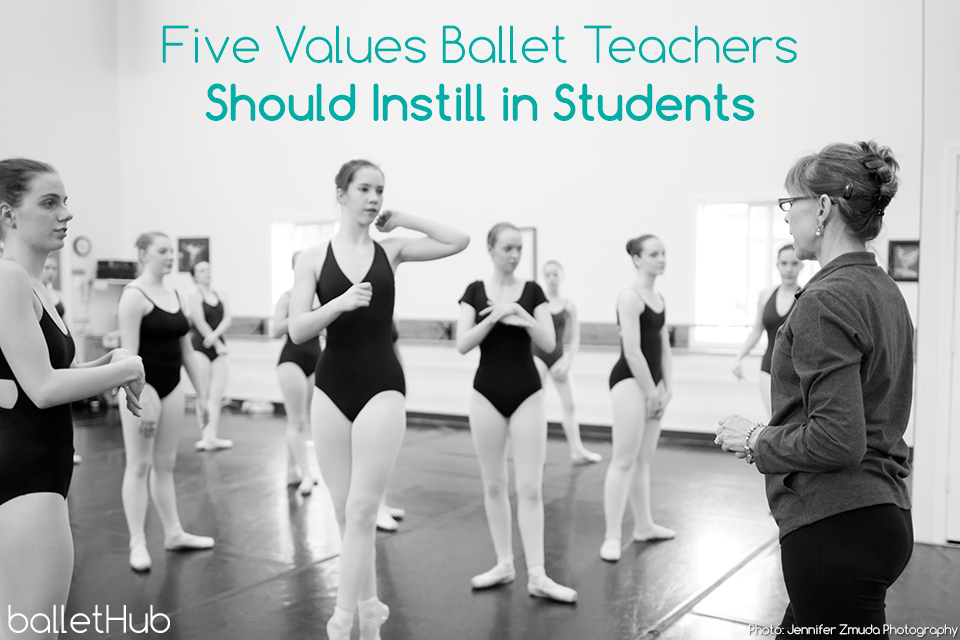When new ballet students stand in the studio doorway anticipating their first dance class, they should feel excited, curious and ready to learn. When a new dancer begins to study, it will hopefully open new doors and opportunities and the student will learn not only about ballet technique, but important life lessons as well. A ballet instructor has the responsibility and privilege to teach students important values through dancing. Though there are many ideals teachers can impart, below are five principles to consider.
Discipline
Ballet is rooted in tradition and has strict discipline and etiquette. Students must learn to work hard and to follow a set of established rules and customs. Ballet requires good behavior and control, and even young children are required to adhere to the curriculum (though young children’s classes should also incorporate imagination and games). It is vital that teachers instill this discipline and teach ethical behavior in class. Teachers must demonstrate good behavior and set a precedent for the class.
Teamwork & Respect for Fellow Dancers
Teamwork and respect for classmates is directly related to discipline. It is necessary for an instructor to teach that respect for one another and working together are of the utmost importance. While healthy competition among students is fine (and frequently motivating), students must remain friendly and able to work cohesively as a unit. Even at the highest levels of professional ballet, dancers work together as a corps de ballet. Teachers should impart the importance of teamwork not only in the classroom, but in performance and behind the scenes as well.
Love of Dance
It is crucial that an instructor teach a love for dance in class. There should be a joy and passion for dance coming from the class teacher; this passion will be contagious. While discipline is integral to classwork, a teacher must not be too hard or rigid with students – it will cause an unhealthy environment and students may learn to fear dance rather than love it. A love and appreciation for ballet is perhaps the most valuable thing a teacher can instill in a student because, while most students will not become professional dancers, they will hopefully grow into adults who love dance. It is the students’ love of dance that will help keep ballet alive, whether they display that love as dancers, audience members, board members, or even when they become a parent and enroll a child in dance.
Physical Prowess
Ballet is challenging on technical and physical levels, and instructors are responsible for teaching physical prowess and skill in class. A good teacher will help students to achieve coordination, balance, rhythm, flexibility and grace. These physical skills will translate into an overall improvement in strength and specificity. Students need to be consistent in their classwork, and teachers must use repetition and problem-solving when creating their exercises and curriculum so that the desired physical attributes can be attained. It is important that teachers be consistent and clear in their corrections to help students advance.
The Process is More Important Than the Outcome
Teachers must help their students understand that when performance opportunities are given, the preparation and process (“the journey”), is equally important to the outcome. This is especially true for schools that participate in competions. Students must appreciatiate the process over the end result, and both teachers and students must be able to keep perspective. Teachers can help students learn to handle disappointment and to recognize the potential for growth in any situation. Competing is only appropriate if the student can recognize the value of the process and can understand that “winning” truly isn’t everything.
Teachers are guides, and it takes a great deal of thought and care to instill values into ballet classes. Students who learn these lessons will be better dancers, and better people as well. While there are many other lessons to teach as a ballet instructor, these five fundamentals will serve as important tools in the classroom.

